We crested Atigun Pass on the Dalton Highway as the Arctic sun slid seemingly sideways across the cloudless northern sky. Before us stretched the true Arctic, that desolate swath of wind-weary, wilderness muskeg fit for no reasonable human, yet home to mankind for thousands of years.
Here, where trees don’t grow and nude, rocky peaks rise abruptly from the swampy bottoms, caribou and muskoxen wander the willows. Arctic foxes dive into leafy caverns created by ground-hugging vegetation, rangey moose boldly navigate exposed river bottoms and … a pipeline runs through it.
It’s odd to be “in the wild” when, off in the distance, this modern-day engineering marvel snakes its way across the tundra. Even after slogging across the muskeg to “get away from the road,” the pipeline still hugs the horizon, a reminder that, though it will eventually prove fruitless, we’re trying to show Mother Nature who’s boss.
Honestly, it’s not unappealing. The Trans-Alaska pipeline is one of those mythical accomplishments that boggles the mind. Construction began in 1975 and the first push of crude dropped into Valdez some 800 miles south in 1977—a feat that even today seems virtually impossible, especially if you’ve had the chance to drive the adjacent Dalton Highway from the little village of Livengood all the way north to where oil is pumped into the pipe at Prudhoe Bay. The pipeline flows through several pump stations that pull the crude over the Brooks Range and then south to the ocean. Here on the North Slope, it contrasts with the barren tundra and provides one of those iconic backdrops to whatever it is you’re doing that has found you so far north and so far from civilization.
We pulled off on an overlook just after topping the Brooks Range and let it all soak in. To our left was Gates of the Arctic National Park and Preserve. To our right, the Arctic National Wildlife Refuge, the canvas of controversy for decades among the determined oil industry and the equally dogmatic environmental community. Separating the two is the pipeline and the Dalton Highway, that ribbon of road base that provides the supply avenue for the Prudhoe Bay oil complex and the community of Deadhorse.
More Like This
But, for a pair of eager fly fishers, the road, the pipe—even the proper nouns assigned to this vast, blustery desert that lies dormant under wind-whipped snow and ice more than half the year—were irrelevant. Reflecting the Arctic sun, as far as we could see, was water. Not constant, ocean-like water, but bands of glistening streams and rivers connecting hundreds of pothole lakes that puncture the tundra like rivets. As we gazed across the flatlands below us, I looked at Rachel and said, “This place is fishy.”
And, frankly, after a summer spent hauling a camper through the north country, it was the destination. We couldn’t go much farther north. Here, at the top of the world, most of my adventure rested in the rearview mirror or in the battle scars endured along the way. Things like a cracked spare tire bracket on the brand-new (but nicely broken-in) camper, an Idaho license plate hanging by a shred of ragged metal off my front bumper, a windshield that looked like it might be more at home in Mosul and more mosquito bites than any reasonable human should have to endure, ever, all led to this viewscape. So I breathed in the sheer emptiness of it all. How could so much nothing be so unforgivingly stunning?
And then there was the fishing.
We dropped down onto the tundra, leaving behind the last remnants of anything alpine, and cruised along the gravel road, lost in the stark landscape. We crossed streams with names like Oksrukuyik and Kuparuk and drove alongside the Sagavanirktok (the fabled Sag, known for massive Dolly Varden that migrate up out of the Arctic Ocean each fall). We pulled into access pads next to streams where road tenders would pump and then spread it on the road to keep the dust down for truckers and we looked at a lot of water.
After an hour or so of driving, we crossed a tannin-stained stream running dark and cold under the highway. I slowed the truck down and took a good look, just like we’d done at every stretch of water we’d crossed.
As we rolled slowly over the bridge, I saw a nose dimple the surface. And then another. Rachel, from the passenger seat, had leaned over me to look for herself.

“I see one!” she said excitedly, a half-shout, half-whisper, as if to let me know she was excited, but not so excited that she’d frighten the grayling rising below. Given the fact that massive haulers and 18-wheelers cross this little creek with regularity, even on the coldest, darkest days of winter, scaring the fish wasn’t a likely possibility, but I knew exactly how she felt. Below us, grayling were feeding. Big. Dumb. Grayling.
Heaven.
We tucked the truck into a small pull-off, wadered up and walked a little ways downstream from the bridge, watching the water carefully as the wild, native cousins to trout and whitefish busied themselves with a fairly prolific gray drake hatch. We slogged through muskeg, wandered among short, squatty willows and plucked ripe blueberries from low-flung bushes and flipped them into our mouths.
Finally, a reasonable distance from the road, we started casting. And grayling being grayling, we started catching. I’d like to think that we were just that good, but the reality was simple: even just a few minutes’ walk from the road, and we were casting flies to fish that have probably never seen flies before. They were gullible. They were ravenous. They were stunningly beautiful. And they were big.

We spent hours on that sunny Arctic day (and there are hours to spend that time of year), wandering down this small tundra river, plucking wild fish from the water at will and marveling at just how big grayling got in the waters where they belonged. More than a few topped that 20-inch plateau, and every one of them was a sight to behold.
We walked back to the bridge as the sun slid perilously close to the western horizon, not setting so much as coming in for a soft landing. With tired arms and fly boxes bursting with ravaged Adams patterns, I realized that this little river was, all tolled, some 60 hours of driving and more than 7,000 miles in the making. I stopped, looked out over the tundra and listened as the river flowed through wind-inspired willows around my knees. Was it worth it? Was it worth the price of a camper, the expense of 10-ply tires and tucking myself into an RV shower on a daily basis?
Was it worth the road time, the viewscape often received through the windows of an SUV as I hustled to get from one spot to the next? Was it worth the cost of Canadian gasoline, fries served with gravy and dragging a summer’s worth of belongings through mud, over rocks and through rain, sleet, snow and midnight sunshine?
You’re God-damned right it was.





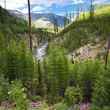
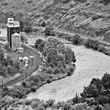









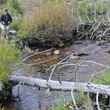
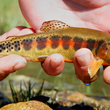



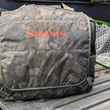
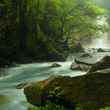



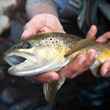
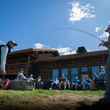



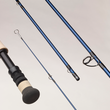
Comments
Gretchen Atkinson replied on Permalink
Great article Chris. You have your dream life.
John Trammell replied on Permalink
I read with envy, Chris.
Pages